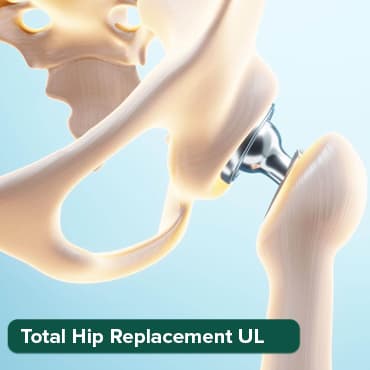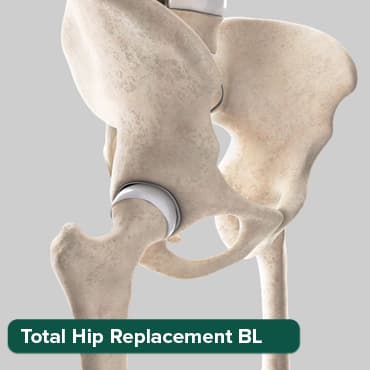
Osteomyelitis: Causes, symptoms, and treatment
09 Aug, 2023
 Healthtrip Team
Healthtrip TeamWe often encounter a myriad of infections, but how often do we pause to consider those that affect the very framework of our body – our bones? Have you ever had a patient with persistent bone pain, perhaps accompanied by fever, and wondered about the deeper implications? Today, I'd like to delve into a condition that might not be as frequently discussed as the common cold but is of significant clinical importance: osteomyelitis. This is an infection that can challenge our diagnostic skills, test our therapeutic knowledge, and most importantly, significantly impact the lives of our patients.
Transform Your Beauty, Boost Your Confidence
Find the right cosmetic procedure for your needs.

We specialize in a wide range of cosmetic procedures

What is osteomyelitis?
Osteomyelitis, in its simplest terms, is an infection of the bone. It can be caused by a variety of microorganisms, but most commonly by bacteria. This infection can either be acute, meaning it develops quickly, or chronic, which means it persists over a long period."
"Now, you might wonder, why is osteomyelitis of such concern in the medical field? Well, bones are vital structures in our body, providing support, protection, and facilitating movement. An infection in the bone can compromise these functions and lead to severe complications if not treated promptly. Moreover, the bone, due to its dense structure, is less accessible to our immune system and certain medications, making infections there particularly challenging to treat. This is why early diagnosis and intervention are crucial. Can you imagine the consequences if such an integral part of our body remains compromised?"
In the coming sections, we'll delve deeper into the causes, risk factors, and the clinical presentation of osteomyelitis. But for now, always remember: osteomyelitis is not just a simple infection; it's an infection that can have profound implications on a person's overall health and quality of life.
Causes of Osteomyelitis
Most popular procedures in India
Total Hip Replacemen
Upto 80% off
90% Rated
Satisfactory

Total Hip Replacemen
Upto 80% off
90% Rated
Satisfactory

Total Hip Replacemen
Upto 80% off
90% Rated
Satisfactory

ANGIOGRAM
Upto 80% off
90% Rated
Satisfactory

ASD Closure
Upto 80% off
90% Rated
Satisfactory

Osteomyelitis is most commonly caused by a bacterial infection, although it can also be due to a fungal infection. The bacteria can reach the bone through various routes:
- Bloodstream (Hematogenous Osteomyelitis): Bacteria from another part of the body can travel through the bloodstream to the bone. In children, this is the most common route of infection.
- Direct Contamination: This can occur when there is an open fracture (the bone pierces the skin), during orthopedic surgery (such as hip replacements or fracture repairs), or from severe puncture wounds that can carry bacteria directly into the bone.
- Contiguous Spread with Vascular Insufficiency: In adults, osteomyelitis often affects the feet and is associated with diabetic foot ulcers. The infection can spread from the ulcer directly into the foot bones.
The most common bacteria that cause osteomyelitis is Staphylococcus aureus. Other bacteria such as streptococci, enterococci, and gram-negative bacteria like Pseudomonas aeruginosa can also cause the infection, particularly in specific populations or after certain procedures.
Risk Factors for Osteomyelitis
Several factors can increase the risk of developing osteomyelitis:
- Recent Injury or Orthopedic Surgery: Open fractures and surgeries can expose bone to bacteria.
- Chronic Wounds: Conditions such as diabetic foot ulcers or pressure ulcers can be entry points for bacteria.
- Vascular Insufficiency: Conditions that impair blood circulation, like diabetes and peripheral arterial disease, can increase the risk of infection and decrease the body's ability to fight off infection.
- Use of Intravenous Catheters or Needles: Individuals who use IV catheters or who inject drugs are at higher risk due to the potential for bacteria to enter the bloodstream.
- Immune Suppression: Conditions that suppress the immune system, such as HIV/AIDS, cancer, or the use of certain medications like corticosteroids or immunosuppressants, can increase susceptibility to infection.
- Chronic Health Conditions: Diseases like diabetes not only affect circulation but also can impair the immune response, making infections more likely.
- Age: Children and older adults are more susceptible to certain types of osteomyelitis.
- Hemodialysis: Patients receiving hemodialysis for kidney failure have an increased risk due to vascular access points and a compromised immune system.
- Smoking and Alcohol Abuse: These behaviors can impair the immune system and wound healing.
- Malnutrition: Poor nutrition can weaken the immune system, making it harder to fight off infections.
Diagnostic Approaches for Osteomyelitis
Diagnosing osteomyelitis can be challenging due to the variety of symptoms and the potential for other conditions to mimic its presentation. However, there are several diagnostic approaches and tools that healthcare professionals use to identify and confirm osteomyelitis. Here's an overview of the diagnostic process:
a. Clinical Evaluation
- Medical History: A thorough medical history is taken to identify any risk factors, such as recent injuries, surgeries, chronic wounds, diabetes, or peripheral vascular disease.
- Physical Examination: The doctor will look for signs of infection, such as redness, swelling, warmth, and tenderness over the affected bone. They will also assess for any drainage or open wounds.
b. Laboratory Tests
- Blood Tests: Elevated levels of white blood cells (WBC), erythrocyte sedimentation rate (ESR), and C-reactive protein (CRP) can indicate an infection. However, these are not specific to osteomyelitis.
- Blood Cultures: Blood cultures may identify the bacteria in the bloodstream, but they are not always positive in osteomyelitis cases.
- Bone Biopsy: A bone biopsy is the gold standard for diagnosing osteomyelitis. It can confirm the presence of infection and identify the causative organism, which is crucial for targeted antibiotic therapy.
c. Imaging Studies
- X-rays: X-rays can show changes in the bone, but these may not be apparent until the disease has progressed for some time, often 10-14 days after the onset of infection.
- Magnetic Resonance Imaging (MRI): MRI is highly sensitive for detecting osteomyelitis and can visualize both the bone and the surrounding soft tissues.
- Computed Tomography (CT) Scan: A CT scan can provide a detailed image of the bone and may be used to guide a biopsy.
- Radionuclide Bone Scanning: This involves injecting small amounts of radioactive material that will collect in the bones, particularly in areas affected by infection or inflammation. A special camera detects the radioactivity and creates images.
- Positron Emission Tomography (PET) Scan: PET scans can be used in conjunction with CT scans (PET/CT) to detect osteomyelitis, especially in complex cases.
- Ultrasound: This can be useful for detecting abscesses in soft tissue that may be associated with osteomyelitis.
d. Specialized Tests
- Leukocyte Scintigraphy: This test involves labeling white blood cells with a radioactive substance and then tracking their location in the body. Accumulation of these cells in a particular area of bone may indicate infection.
- Microbiological Testing: If there is an open wound or drainage, a sample can be taken and cultured to identify the bacteria present.
e. Differential Diagnosis
The symptoms of osteomyelitis can resemble those of other conditions, such as arthritis, bone tumors, or gout. Therefore, part of the diagnostic process involves ruling out these other conditions.
f. Monitoring Response to Treatment
Once osteomyelitis is diagnosed, the response to treatment is monitored through:
- Repeating Blood Tests: To see if the markers of infection are returning to normal levels.
- Follow-Up Imaging: To assess whether the infection is resolving with treatment.
Prompt and accurate diagnosis of osteomyelitis is crucial for effective treatment. A multidisciplinary approach often involving infectious disease specialists, orthopedic surgeons, radiologists, and pathologists is typically employed to ensure comprehensive care. If you need assistance in accessing specific medical guidelines or detailed diagnostic criteria, I can help facilitate that information.
Treatment of Osteomyelitis
Osteomyelitis is an infection of the bone, a serious condition that requires prompt treatment. The treatment for osteomyelitis typically involves a combination of antibiotic therapy and surgery. Here's a general overview of the treatment modalities:
a. Antibiotic Therapy
- Intravenous Antibiotics: The mainstay of osteomyelitis treatment is aggressive antibiotic therapy, which is often started intravenously (IV). The course of antibiotics can last for several weeks to a few months, depending on the severity of the infection and the patient's response to treatment.
- Oral Antibiotics: After a period of IV antibiotics, the treatment may switch to oral antibiotics. The total duration of antibiotic therapy can be quite long, sometimes lasting six weeks or more.
- Tailored Antibiotic Choice: The choice of antibiotic is usually based on the type of bacteria causing the infection, which is determined by bone cultures obtained during surgery or needle biopsy. The treatment is tailored to be effective against the specific pathogens identified.
b. Surgical Treatment
- Debridement: The surgical removal of diseased bone and associated soft tissue is often necessary. This process, known as debridement, involves taking out any bone that has been infected or has died.
- Drainage: If there is an abscess or a collection of pus, it may need to be drained during the surgical procedure.
- Restoration of Blood Flow: Sometimes, the removal of infected bone can disrupt blood flow to the area. In such cases, a procedure to restore blood flow, such as a bone graft or other reconstructive surgery, may be necessary.
- Stabilization of the Bone: If the infection has weakened the bone, stabilization with metal plates, screws, or rods might be required.
- Amputation: In severe cases where the infection does not respond to other treatments, or when it threatens the life of the patient, amputation of the affected limb may be necessary.
c. Supportive Care
- Pain Management: Pain associated with osteomyelitis can be significant, and pain management strategies are an important part of supportive care.
- Wound Care: If the infection has caused an open wound or if surgery has created one, proper wound care is essential to prevent further infection and promote healing.
- Physical Therapy: After the infection is under control, physical therapy may be needed to improve strength and mobility.
d. Monitoring
Regular Follow-Up: Patients will need regular follow-up appointments to monitor the infection and response to treatment. This may include blood tests, imaging studies, and in some cases, additional surgeries.
e. Emerging Treatments
- Antimicrobial Beads: In some cases, antibiotic-impregnated beads are placed in the infected area to deliver high local doses of antibiotics.
- Hyperbaric Oxygen Therapy: There is some evidence to suggest that hyperbaric oxygen therapy, which involves breathing pure oxygen in a pressurized room, can help in the treatment of chronic osteomyelitis.
- Phage Therapy: In cases where bacteria are resistant to antibiotics, bacteriophage therapy, which uses viruses that target specific bacteria, may be considered, although this is still largely experimental.
It's important to note that the treatment of osteomyelitis can be complex and must be tailored to the individual patient. The approach depends on various factors, including the patient's age, overall health, the cause of the infection, the location and severity of the infection, and whether the infection is acute or chronic. Always consult a healthcare professional for the diagnosis and treatment of osteomyelitis. If you need detailed information from medical sources or guidelines, I can help you find that.
Complications of Osteomyelitis
Osteomyelitis, if not diagnosed and treated promptly, can lead to a range of complications. These complications can be local, affecting the immediate area of the infection, or systemic, impacting the entire body. Understanding these complications is crucial for clinicians to monitor patients and intervene timely. Let's delve deeper into each of these complications:
A. Abscess Formation:
- An abscess is a localized collection of pus surrounded by inflamed tissue, resulting from the body's response to infection.
- Mechanism: As the body tries to contain the infection, white blood cells accumulate at the site, leading to the formation of pus. This pus can become walled off, creating an abscess.
- Implications: Abscesses can exert pressure on surrounding tissues, causing pain and further damage. They may also rupture and spread the infection to adjacent tissues or even into the bloodstream.. Sepsis:
B. Sepsis:
- Sepsis is a life-threatening condition that arises when the body's response to an infection injures its own tissues and organs.
- Mechanism: If the infection in the bone spreads to the bloodstream, it can lead to a systemic inflammatory response. This widespread inflammation can cause a cascade of changes that damage multiple organ systems.
- Implications: Sepsis requires immediate medical attention. Symptoms can include fever, rapid heart rate, rapid breathing, confusion, and even organ dysfunction. If not treated promptly, sepsis can progress to septic shock and be fatal.
C. Chronic Osteomyelitis:
- If acute osteomyelitis is not adequately treated, it can transition into a chronic form, characterized by persistent infection and inflammation.
- Mechanism: Some bacteria, especially those that form biofilms, can evade the immune system and antibiotic treatment, leading to a prolonged infection.
- Implications: Chronic osteomyelitis can be challenging to treat, often requiring prolonged antibiotic therapy and sometimes surgical intervention. It can also lead to recurrent flare-ups of symptoms.
.D. Pathological Fractures:
- Breaks in weakened bones due to infection.
- Implications: Causes pain, may need surgical intervention, and prolongs recovery.
E. Joint Dysfunction:
- Reduced joint mobility due to infection near or within a joint.
- Implications: Impacts daily activities, may require surgical interventions.
In essence, osteomyelitis can lead to a range of complications, emphasizing the importance of early detection and treatment.
Prevention of Osteomyelitis
Preventing osteomyelitis is crucial, especially in populations at higher risk. By taking proactive measures, the incidence and severity of this bone infection can be significantly reduced. Here are some key preventive strategies:
A. Proper Wound Care:
- Open wounds, especially those that are deep or contaminated, can serve as entry points for bacteria that can infect the bone.
- Recommendations:
- Clean all wounds promptly and thoroughly with mild soap and water.
- Apply an antibiotic ointment to reduce the risk of bacterial colonization.
- Cover the wound with a sterile bandage and change it regularly.
- Monitor for signs of infection, such as increased redness, swelling, pus, or if the wound becomes excessively painful.
B. Timely Treatment of Infections:
- Infections elsewhere in the body can spread to the bones, especially in individuals with compromised immune systems.
- Recommendations:
- Seek medical attention for persistent or severe infections.
- Follow prescribed antibiotic regimens fully, even if symptoms improve before the medication is finished.
- Regularly monitor chronic conditions, like diabetes, to prevent complications that can lead to infections.
C. Prophylactic Antibiotics in Certain Surgical Procedures:
- Some surgical procedures, especially those involving bones or implants, carry a higher risk of post-operative infections.
- Recommendations:
- Administer prophylactic antibiotics before surgeries that have a high risk of post-operative infections.
- Ensure sterile techniques are strictly adhered to during surgical procedures.
- Monitor surgical sites post-operatively for signs of infection and intervene promptly if any are detected.
In summary, osteomyelitis is a serious condition that underscores the importance of early diagnosis and intervention. As healthcare professionals, our role extends beyond treating the condition itself. We must also focus on patient education, emphasizing preventive measures and timely medical consultation. The complexities of osteomyelitis remind us of the interconnectedness of our body's systems and the critical role of our immune defenses. By staying informed and proactive, we can ensure better outcomes for our patients and reduce the prevalence and impact of this challenging bone infection.
Wellness Treatment
Give yourself the time to relax
Lowest Prices Guaranteed!

Lowest Prices Guaranteed!
